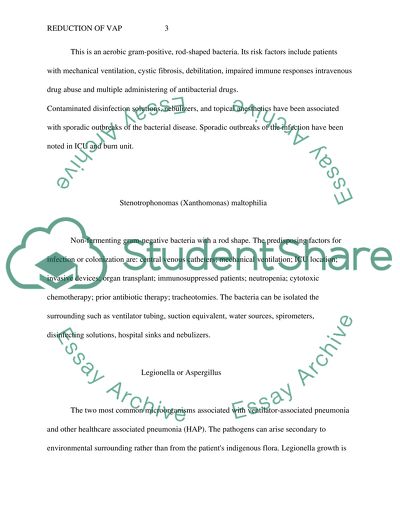Cite this document
(“Reduction of VAP Research Paper Example | Topics and Well Written Essays - 3000 words - 1”, n.d.)
Reduction of VAP Research Paper Example | Topics and Well Written Essays - 3000 words - 1. Retrieved from https://studentshare.org/nursing/1686188-1what-is-the-most-effective-intervention-to-decrease-vap-in-terms-of-using-antiseptic-chlorhexidine-oral-care-versus-standard-toothbrush-oral-care
Reduction of VAP Research Paper Example | Topics and Well Written Essays - 3000 words - 1. Retrieved from https://studentshare.org/nursing/1686188-1what-is-the-most-effective-intervention-to-decrease-vap-in-terms-of-using-antiseptic-chlorhexidine-oral-care-versus-standard-toothbrush-oral-care
(Reduction of VAP Research Paper Example | Topics and Well Written Essays - 3000 Words - 1)
Reduction of VAP Research Paper Example | Topics and Well Written Essays - 3000 Words - 1. https://studentshare.org/nursing/1686188-1what-is-the-most-effective-intervention-to-decrease-vap-in-terms-of-using-antiseptic-chlorhexidine-oral-care-versus-standard-toothbrush-oral-care.
Reduction of VAP Research Paper Example | Topics and Well Written Essays - 3000 Words - 1. https://studentshare.org/nursing/1686188-1what-is-the-most-effective-intervention-to-decrease-vap-in-terms-of-using-antiseptic-chlorhexidine-oral-care-versus-standard-toothbrush-oral-care.
“Reduction of VAP Research Paper Example | Topics and Well Written Essays - 3000 Words - 1”, n.d. https://studentshare.org/nursing/1686188-1what-is-the-most-effective-intervention-to-decrease-vap-in-terms-of-using-antiseptic-chlorhexidine-oral-care-versus-standard-toothbrush-oral-care.


